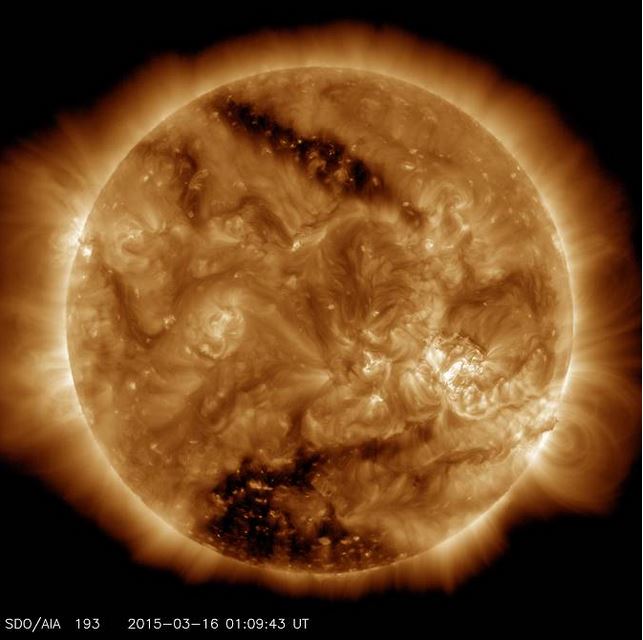Two dark patches, known as coronal holes, were detected and photographed by NASA’s Solar Dynamic Observatory (SDO) on March 16th. The larger one, near the southern pole, is huge – it covers from 6% to 8% of the Sun’s surface.
SDO scientists say the larger coronal hole is one of the biggest detected in decades.
The smaller dark patch, nearer the northern pole, is narrow and long. It only covers approximately 0.16% of the solar surface, which may not sound like much, but is about 3.8 billion square miles (Earth is 197 million square miles).

This image taken on March 16, 2015, shows two coronal holes. The lower one was one of the biggest observed in decades. (Image Credit: NASA/SDO)
What are coronal holes?
Coronal holes are regions of the Sun’s outer atmosphere (corona) which have a lower density and temperature.
Coronal holes can trigger fast solar winds of solar particles that enevelop the Earth.
Rather than rapidly looping back into the Sun’s surface, the magnetic field in coronal hole regions extend far out into space.
Magnetic fields that loop up and back down to the Sun’s surface are seen as arcs in non-coronal hole regions (see image above), including over the lower-right horizon.
In the lower right quadrant of the image, the bright active region is where the solar flares were observed last week.
When a coronal hole is near the centre of the Earth-facing solar disk, solar particles make their way to Earth and cause geomagnetic disturbances, as well increasing the incidence of auroral activity (northern or southern lights) on high latitudes (far north and south of our planet).
The northern parts of Europe, North America and southern regions of Australasia experienced intense auroral activity yesterday evening.
